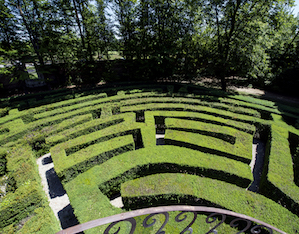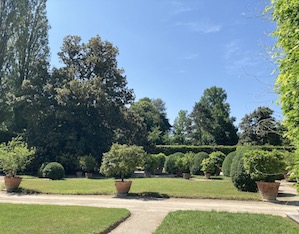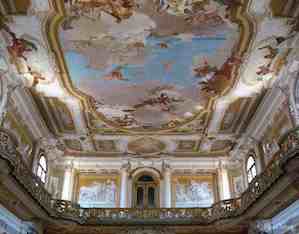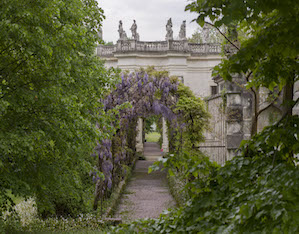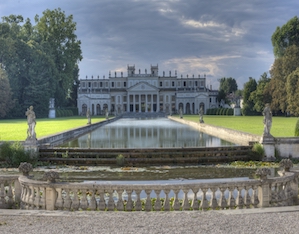The famous 18th century maze, the greenhouses, the collection of citrus trees that once used to “migrate” by ship as far as the Giardini Reali of Venice: reflected in the immense fishpond, the villa, property of the Italian State since 1866, was awarded the “Il parco più bello d’Italia” – Italy’s most beautiful park prize in 2008.
The complex was designed by Count Girolamo Fregimelica Roberti between 1721 and 1735. The villa on the other hand was designed by the architect Francesco Maria Preti. In 1807 the family sold it to Napoleon, who donated it to Eugenio di Beauharnais, Viceroy of Italy, who sojourned there extensively with Amalie Auguste of Bavaria. Between 1812 and 1815 the garden underwent a first reorganisation of the plant and sculptural components maintaining the general layout defined by the Pisani family. During the Napoleonic period the maze was enlarged, the avenues of the great park were planted with linden and plane trees, citrus tree vases were introduced, and the English wood to the north-west was created. After 1815 the complex passed to the House of Habsburg that devoted great care to the property thoroughly enriching the botanical section. When it passed to the Italian State in 1884 Villa Pisani became a museum. The residence, beautified by the frescoes of Giambattista Tiepolo, Giambattista Crosato, Guarana and the Neo-classic decors of Borsato and Bevilacqua, has had among its guests the most prominent representatives of European aristocracy as well as to illustrious celebrities such as Wagner and D’Annunzio. Located in a bend of the Brenta Naviglio, the park was inspired by the great French creations that the Venetian ambassador Alvise Pisani, had admired between 1699 and 1703 when in service at the court of King Louis XIV. A large 20th-century fishpond occupies the vast parterre. The true centre of the composition is the exedra-belvedere from which six paths branch out. One of them leads to the famous boxwood maze with the circular tower at its centre and to the north another path leads to the elegant 18th-century caffehaussituated on an artificial hillock containing an ice-room and surrounded by a ring of water. Between 1995 and 2005 the garden underwent considerable restoration that reinstated the collection of citrus trees and plants in vases and the system of internal views.


